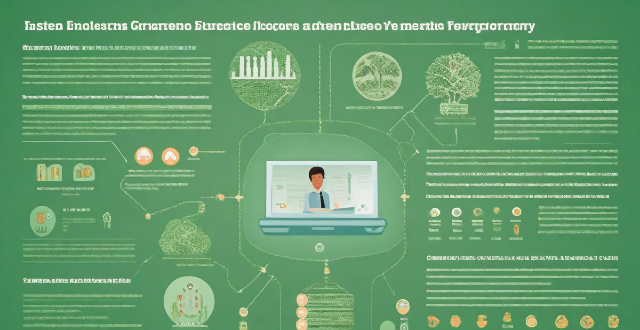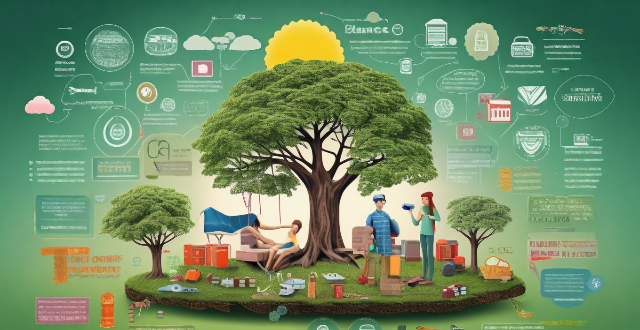Partner People

How can I choose the perfect holiday gift for my partner ?
Choosing the perfect holiday gift for your partner can be challenging, but with careful consideration and thoughtfulness, you can find a present that will make them feel loved and appreciated. Here are some tips to help you choose the perfect gift: 1. Consider their interests and hobbies. Think about what they enjoy doing in their free time and get them something related to their passions. 2. Pay attention to hints and clues. Has your partner mentioned anything they've been wanting lately? Take note of these clues and use them to guide your gift selection. 3. Think about their needs. Consider what your partner might need in their life right now, such as a new piece of technology or an item for their home or office. 4. Personalize it. Adding a personal touch to your gift can make it even more special. Consider customizing or monogramming a piece of jewelry, clothing, or another item. 5. Experience gifts. Sometimes the best gifts aren't material possessions but experiences instead. Plan a special outing or activity that you both can enjoy together, such as a cooking class or a weekend getaway. 6. Don't forget the card. Include a heartfelt card expressing your love and appreciation for your partner. A handwritten note can add that extra touch of thoughtfulness and let them know how much you care. By following these tips, you should be able to find the perfect holiday gift for your partner that shows how much you love and appreciate them. Remember, it's not about how much money you spend, but rather the thought and effort behind the gift that truly matters.

What role do environmental organizations play in promoting climate-friendly employment ?
Environmental organizations are crucial in promoting climate-friendly employment through various roles including advocacy and policy influence, education and training, research and data collection, direct action and intervention, and collaboration and partnership building. They lobby for green policies, promote corporate responsibility, collaborate internationally, raise public awareness, offer skill development programs, partner with educational institutions, analyze employment trends, study economic impact, document success stories, fund sustainable projects, work with local communities, build NGO capacity, organize networking events, partner with government agencies, and form alliances with businesses. These efforts help create a more sustainable future while ensuring job security and economic prosperity for communities around the world.

How do women navigate power dynamics in relationships ?
In relationships, power dynamics often play a significant role, and understanding how to navigate them is crucial for maintaining healthy partnerships. Here's a detailed exploration of strategies women can use to manage power dynamics effectively: #### **Understanding Power Dynamics** Power dynamics refer to the distribution of influence, control, and authority within a relationship. It's important to recognize that power imbalances can manifest in various forms, such as financial disparity, differences in social status, educational background, or even emotional control. ##### **Key Points to Consider:** - **Awareness:** Recognize when power imbalances are present. - **Equality:** Work towards an equal distribution of power. - **Communication:** Open dialogue about each other's needs and expectations. #### **Strategies for Navigating Power Dynamics** 1. **Open Communication** - Start by discussing your feelings and expectations openly. - Use "I" statements to express yourself without accusing or blaming. - Encourage your partner to do the same. 2. **Setting Boundaries** - Identify what you find acceptable and unacceptable in a relationship. - Clearly communicate these boundaries to your partner. - Respect each other's boundaries equally. 3. **Shared Decision-Making** - Make decisions together rather than one person making all the choices. - Discuss options and consider each other's opinions and preferences. - Resolve conflicts collaboratively. 4. **Financial Independence** - Aim for financial independence where possible. - Discuss money matters transparently and work towards joint financial goals. - Avoid financial dependence on a partner to maintain negotiating power. 5. **Personal Growth and Self-Improvement** - Invest in your own education and career development. - Pursue hobbies and interests outside of the relationship. - Maintain a strong support network of friends and family. 6. **Recognizing and Addressing Manipulation** - Be aware of manipulation tactics such as guilt-tripping, silent treatments, or gaslighting. - Address these behaviors immediately and firmly. - Seek help from a counselor if needed. 7. **Mutual Respect** - Treat each other with respect at all times. - Avoid belittling or undermining your partner, even in arguments. - Acknowledge each other's achievements and contributions. 8. **Seeking Support** - Don't hesitate to seek advice from trusted friends, family, or professionals. - Attend workshops or read literature on healthy relationships. - Consider couples counseling if issues persist. #### **Conclusion** Navigating power dynamics in relationships requires a conscious effort to maintain equality, respect, and open communication. By employing strategies like setting clear boundaries, fostering shared decision-making, and encouraging personal growth, women can ensure their voices are heard and their needs are met within their relationships. It's essential to address any signs of unhealthy power dynamics promptly and to seek support when necessary to preserve a balanced and fulfilling partnership.

How can we encourage more people to adopt green technology ?
In this article, the author discusses various ways to encourage people to adopt green technology. These include education and awareness, financial incentives, government policies and regulations, collaboration and partnerships, and research and development. The author emphasizes the importance of promoting the benefits of green technology, highlighting its environmental impact, and sharing success stories. They also suggest offering tax credits, rebates, grants, and low-interest loan programs to incentivize individuals and businesses to invest in green technology. Additionally, the author recommends implementing mandatory standards for energy efficiency and emissions reduction, creating incentive programs for companies that exceed environmental regulations, and prioritizing the purchase of green technology products by government agencies. Collaboration with industry leaders, non-profit organizations, and local communities is also crucial in promoting the adoption of green technology. Finally, the author suggests investing in innovation, supporting startups working on green technology solutions, and facilitating access to resources for researchers and developers.

What are the best practices for international credit management ?
Managing credit in an international context can be challenging due to varying laws, customs, and business practices. Here are some best practices to consider: 1. Understand the local culture and business environment of the country you are dealing with. Seek advice from local experts or consultants who have experience in the region. 2. Conduct a thorough credit assessment of potential partners or customers, including reviewing financial statements, payment history, and using third-party credit reporting agencies. 3. Establish clear credit terms and conditions that are understood by both parties, including payment terms, interest rates, late fees, and other provisions. Ensure consistent communication throughout the transaction process. 4. Monitor payment performance closely to identify potential issues early on, such as setting up alerts for missed payments or delays in payment processing. Take prompt action if payment issues arise. 5. Use technology to streamline credit management processes, such as automated invoice generation and payment tracking systems. Consider cloud-based solutions for real-time access to data. 6. Build strong relationships with local partners who can provide insights into the local market and help navigate cultural differences or challenges. Consider joint ventures or partnerships to share risks and resources more effectively.

What role should parents play in their child's education, and how can they partner with teachers to achieve success ?
The article emphasizes the significant role of parents in their children's education. Parents are crucial in creating a supportive home environment, encouraging independence and responsibility, staying involved in their child's education, and partnering with teachers. By doing so, parents can help ensure their child's academic success.

How can we encourage people to adopt eco-friendly habits in their daily lives ?
The article discusses ways to encourage eco-friendly habits, including education and awareness, incentives and rewards, and community involvement. It emphasizes the importance of raising awareness about environmental issues, teaching sustainable practices, offering discounts and rebates for eco-friendly products, providing tax breaks and grants for green initiatives, collaborating with local organizations, and fostering a sense of community through online platforms and events. The conclusion highlights the significance of adopting eco-friendly habits for the well-being of the planet and calls for collective action to create a brighter future.

How can we prevent more people from becoming climate refugees ?
Strategies to prevent more people from becoming climate refugees include reducing greenhouse gas emissions, implementing adaptation measures, promoting international cooperation, raising awareness and education, and fostering sustainable development. By taking these actions, we can work towards a future where fewer people are forced to become climate refugees due to the devastating effects of climate change.

How can we raise climate awareness among people ?
The article outlines various methods to raise climate awareness among people, including integrating climate change education into school curriculums, launching public awareness campaigns, encouraging news outlets to cover climate-related topics, organizing community events and workshops, creating volunteer programs, establishing community gardens and green spaces, implementing government regulations and incentives, promoting sustainable business practices, and educating consumers about the environmental impact of their purchasing decisions.

How can I meet new people through sports ?
How to Meet New People through Sports Meeting new people who share your passion for sports can be a fun and rewarding experience. Here are some ways to do it: 1. Join a sports club or league: This is one of the best ways to meet new people who share your interest in sports. There are many different types of clubs and leagues available, so you can find one that suits your skill level and interests. You can also participate in tournaments and events organized by the club, which will give you more opportunities to interact with other members. 2. Attend local sporting events: Attending local sporting events is another great way to meet new people who enjoy sports. You can go to games or matches of your favorite teams and strike up conversations with other fans. You can also volunteer at these events, which will allow you to meet people while contributing to the community. 3. Take up a new sport: Taking up a new sport is not only good for your physical health but can also help you meet new people. Joining a beginner's class or group lesson is a great way to learn a new sport while meeting others who are also learning. As you progress in your skills, you may have the opportunity to join more advanced groups or teams. 4. Participate in online sports communities: Online sports communities are a great way to connect with people from all over the world who share your passion for sports. You can join forums, chat rooms, or social media groups related to your favorite sports. Participating in online discussions and events can help you build relationships with other sports enthusiasts. 5. Host or attend watch parties: Hosting or attending watch parties for big games or tournaments is a fun way to meet new people who love sports as much as you do. Invite friends, family, and colleagues to watch the game together and encourage them to bring their own friends along. This can create a sense of camaraderie among everyone involved and lead to lasting friendships.